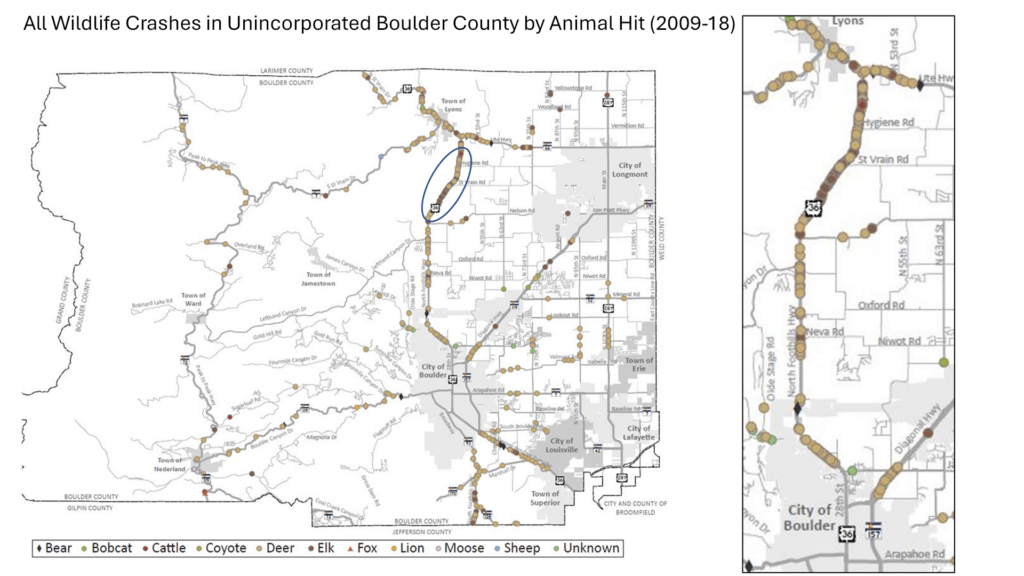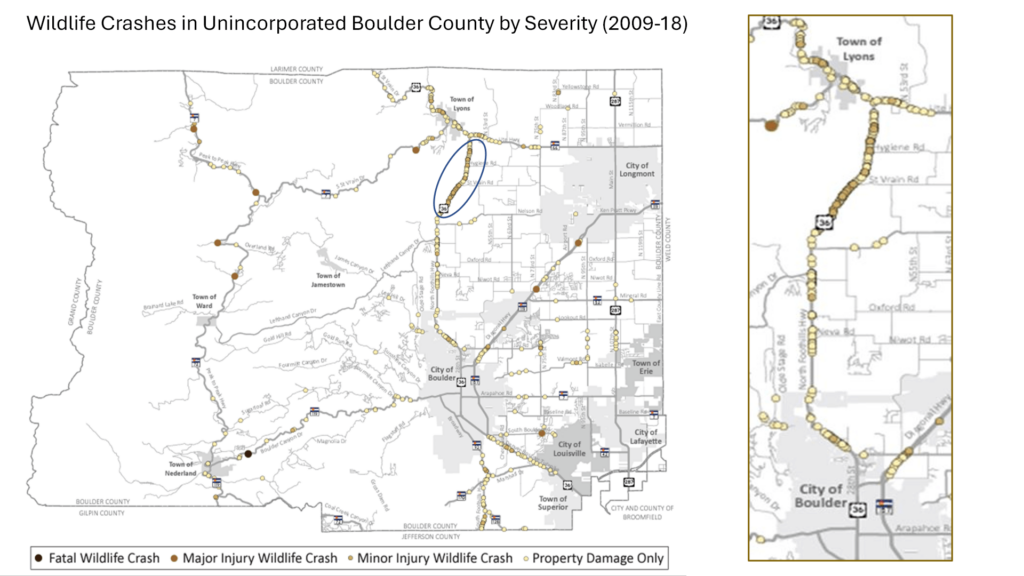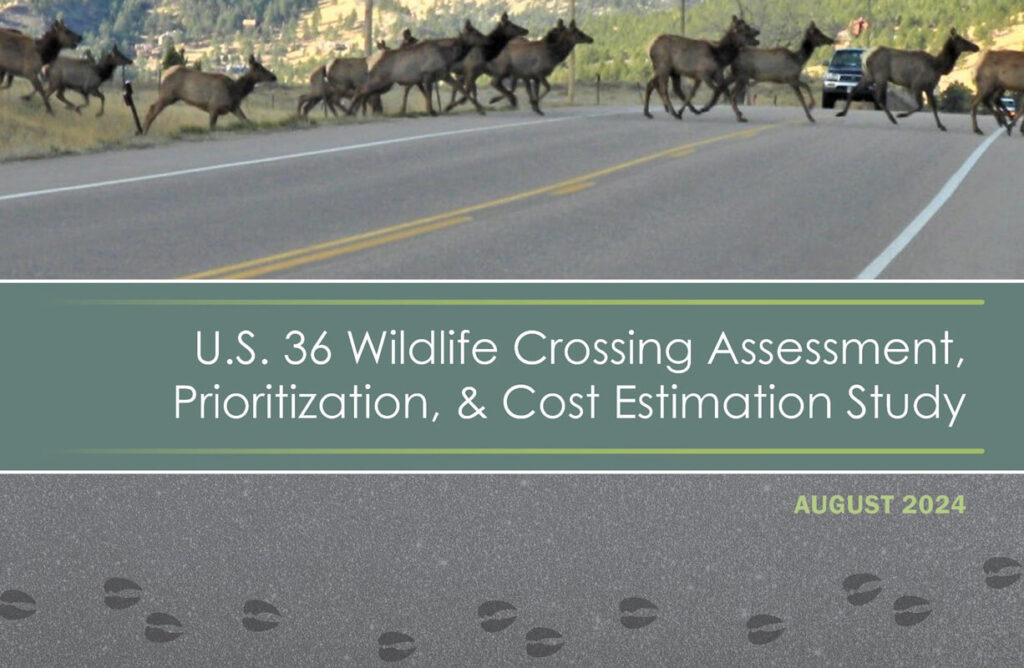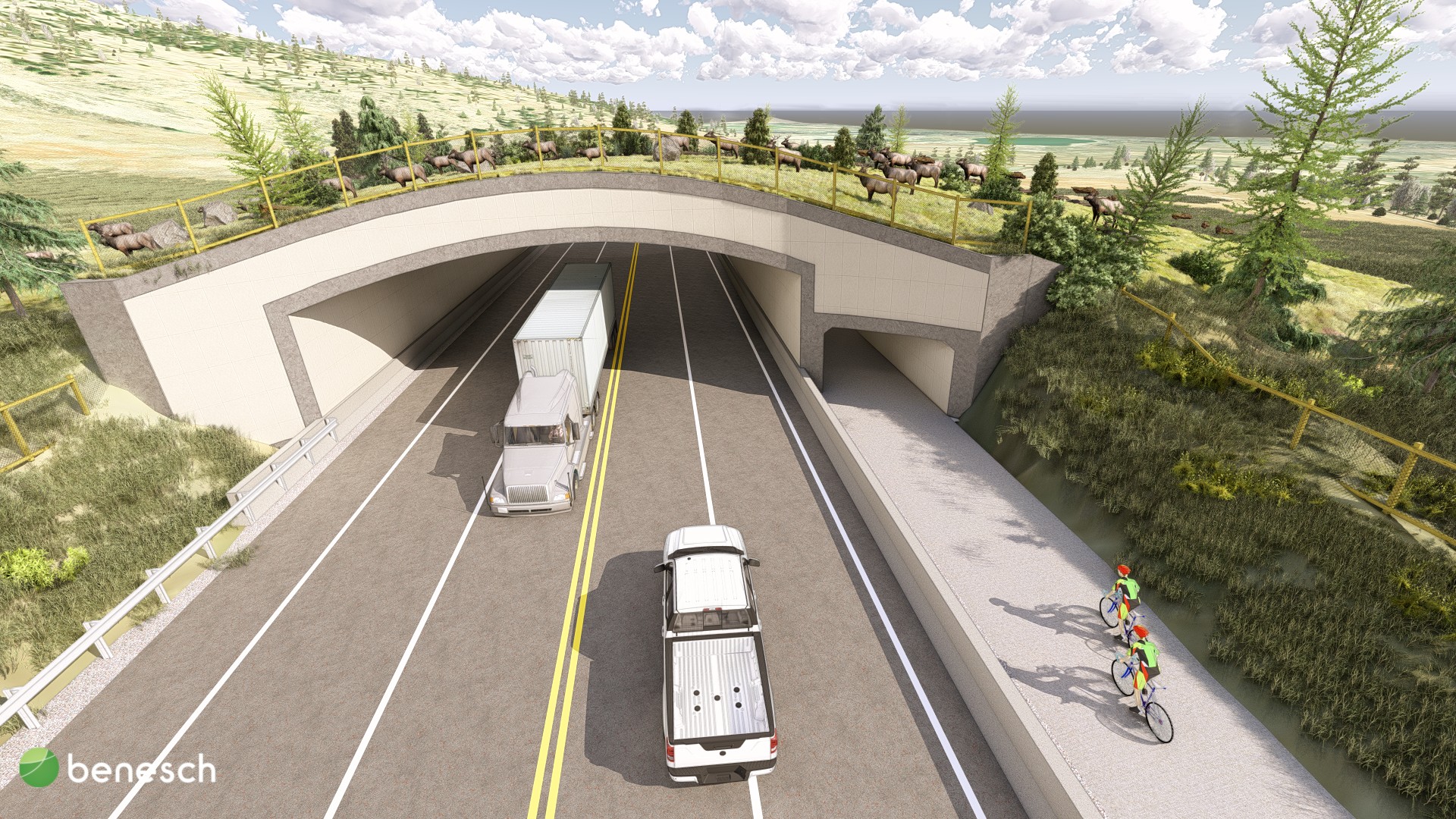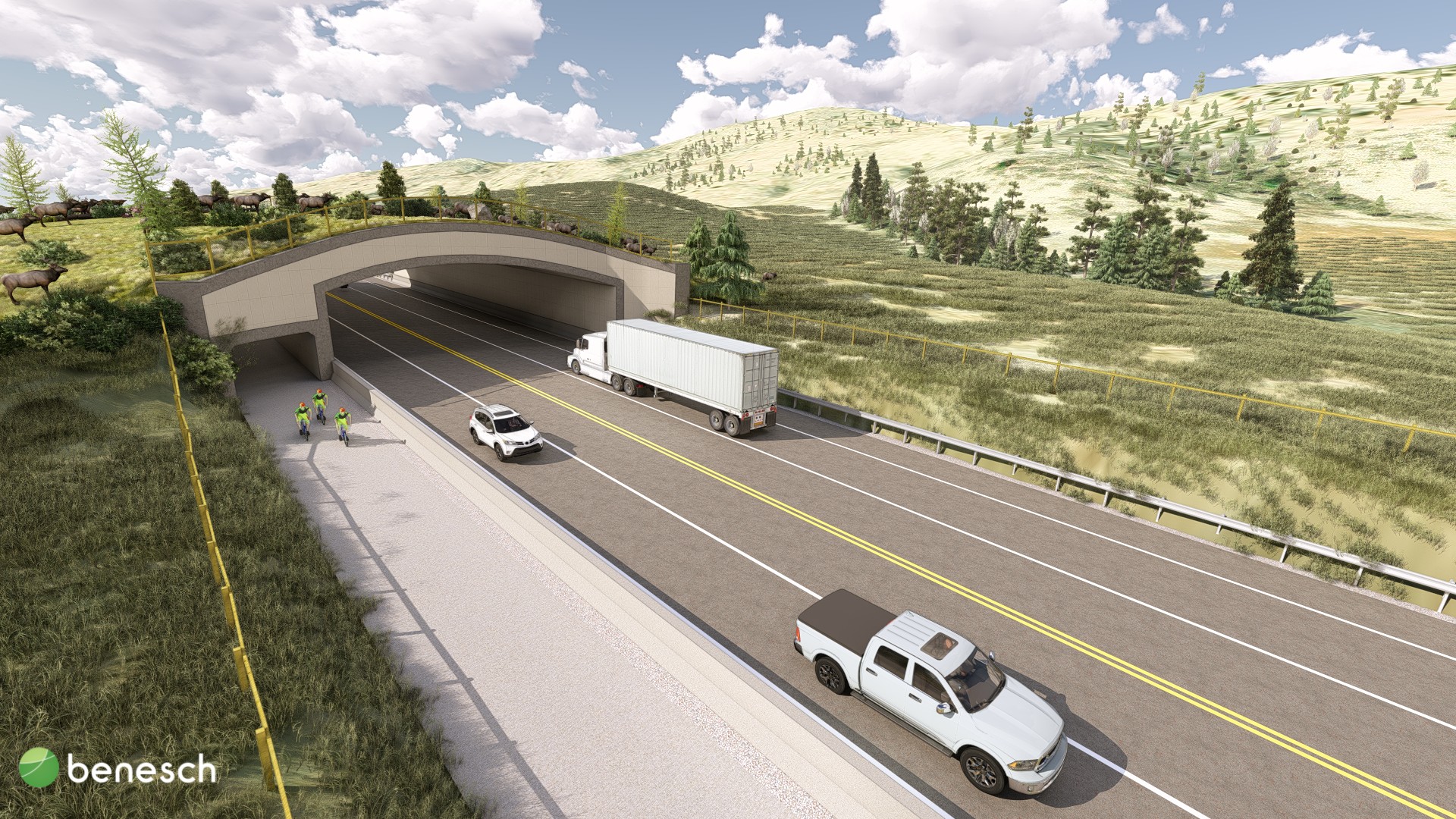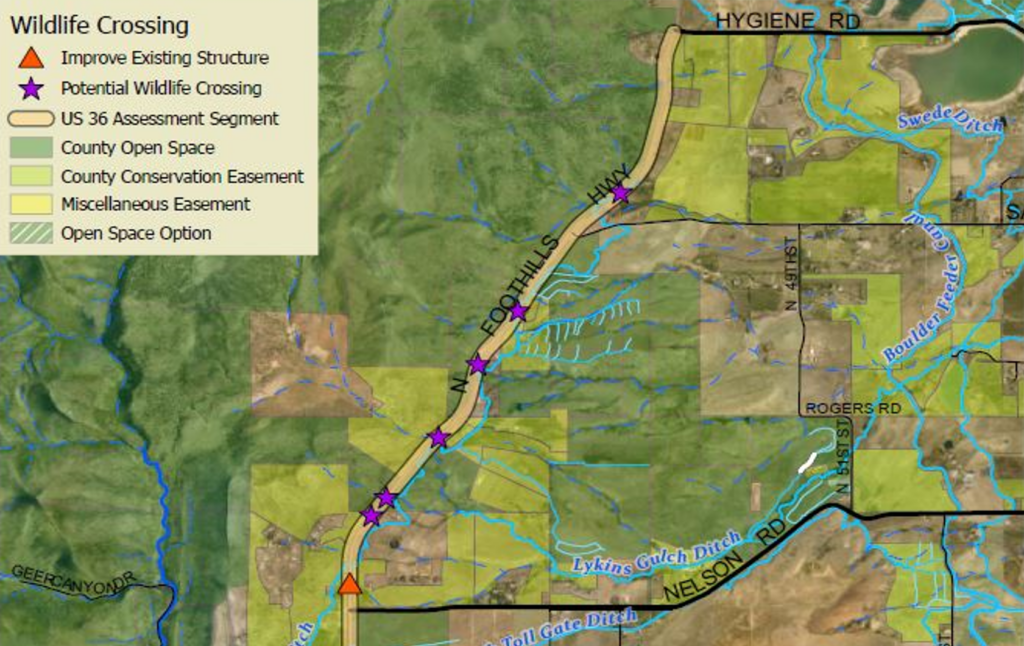Boulder County is in the process of planning wildlife crossing structures along US 36 between Boulder and Lyons. These structures help reduce collisions between vehicles and wildlife, and make it easier for animals to move around the area. The project is still in its early planning phases and public input, including input from nearby property owners, will be requested and used as the project progresses.
US 36 Wildlife Crossings
Feedback Requested
Let us know what you think about proposed wildlife crossings. The survey is only two questions and will take less than a minute to complete. Your feedback will help determine the future of the project.
Action Needed
Reducing the number of vehicle-related wildlife accidents on US 36 between Boulder and Lyons has been a longstanding priority. This was further affirmed by the Eastern Slope and Plains Wildlife Prioritization Study (ESPWPS) in April 2022. The report was conducted for the Colorado Department of Transportation and Colorado Parks and Wildlife and outlines regional priorities and recommended actions aimed at decreasing wildlife-vehicle collisions.
Top 5%
The section of US 36 between Boulder and Lyons (emphasis on Nelson to St. Vrain) was rated in the top 5% and has the highest prioritization score in Region 4. This is based on modeling that includes wildlife-vehicle collisions, deer/elk density of winter range use, deer/elk migration routes, traffic volumes overall, and distance from suburban housing density.
10x Higher
Wildlife strikes average 3.2 animals per mile/per year which is more than 10 times higher than the rest of Boulder County, which averages .26 strikes per mile/per year.
Damages
The human cost of wildlife collisions is significant. Each accident typically costs drivers $11,100 in property damages and over $101,000 if injured.
Crash Data
Traffic crash data from 2009-2018 shows wildlife-vehicle collisions are most numerous on US 36 between Boulder and Lyons.
Assessment, Prioritization, and Cost Estimation Study
Boulder County hired, and worked closely with, Benesch and Pinyon Environmental Inc. to conduct a study and create a conceptual analysis report. The goals of the study were to:
- Assess and prioritize wildlife crossing concepts in the project corridor.
- Provide cost estimates including contingencies for recommended priority crossing locations and supporting infrastructure.
- Assess strategies to facilitate the safe passage of wildlife in the greater area of interest.
The report discusses mitigation strategies for smaller to medium-sized wildlife, such as retrofitting existing culverts, in addition to developing strategies for large animal crossings, such as elk and deer. It provides cost estimates including contingencies for the recommended wildlife crossing concepts, and offers potential strategies to implement these projects.
Wildlife Crossings
Boulder County is considering several different wildlife crossing structures including overpasses, underpasses, and wildlife fencing. The exact designs have not been finalized and the images below are ideas being considered.
Potential Locations from ESPWPS
- All highway segments ranked in the top 5% of the Eastern Slope and Plains Wildlife Prioritization Study (ESPWPS) were further assessed in person.
- Consultants examined the surrounding topography to identify suitable locations for wildlife crossings and assessed whether existing infrastructure could be modified to accommodate these crossings.
- Six areas were identified as potential wildlife crossings and one existing structure could be improved.
North Foothills Bikeway Feasibility Study
The North Foothills Bikeway Feasibility Study was completed on Aug. 13, 2024. The study determined the feasibility of a bikeway along US 36. The study’s aim was to determine the viability of constructing a dedicated bikeway that would be physically separated from motorized traffic.
Planners are collaborating closely to ensure any proposed bikeway and wildlife crossings are properly coordinated. The designs for both projects will be carefully aligned to accommodate the needs of the other, so that the implementation of one will not adversely impact the other.
By aligning these parallel initiatives, the project teams are working to deliver infrastructure solutions that safely and effectively meet the multifaceted needs of the community and improve wildlife connectivity. The project teams are referring to these combined efforts as ‘Safety for All’ in reference to the goals of improving safety for motorists, cyclists, pedestrians and wildlife in this deadly corridor.
Previous Public Meetings
Oct. 22, 2024 – Audubon Society
Staff presented information about the project to the Boulder County Audubon Society.
Video
Aug. 7, 2024 – Information Meeting
Staff presented the latest information about the project. Attendees were able to ask questions and share concerns.
Video
May 15, 2024 – Society for Ecological Restoration
The Society for Ecological Restoration-Rocky Mountain’s group of restoration-minded professionals held a panel discussion about all things wildlife crossing and the importance of implementing these projects from wildlife connectivity and transportation safety perspectives.
Panelists included:
- Ben Goldfarb, Environmental Journalist
- Julia Kintsch, Senior Ecologist at Eco-Resolutions
- Susan Spaulding, Wildlife Biologist at Boulder County
April 25, 2024 – Parks & Open Space Advisory Committee
Staff introduced the project to the Parks & Open Space Advisory Committee.
Staff Memo
Video
Funding
Grant funding will be essential for the completion of the project. Boulder County will actively pursue various federal and state grant programs to secure the necessary funding.
- America the Beautiful Grant: The National Fish and Wildlife Foundation (NFWF) provides grants aimed at the development of large-scale, locally led projects spanning public and private lands. Priorities include connecting and reconnecting wildlife corridors, large landscapes, watersheds, and seascapes.
- The Wildlife Crossing Fund: Recently partnered with private and public entities to secure $500 million dollars towards wildlife crossings
- Safe Crossings for Colorado Wildlife and Motorists Act-SB22-151: Provides $5 million from the state’s general fund specifically towards leveraging match for the FHWA WCPP Grant.
Parks & Open Space has allocated $150,000 from Capital and Stewardship Funds to support future wildlife crossings projects. This funding will serve as matching funds for design and/or implementation efforts.
Partner Support
The project has the support of the following agencies:
- Colorado Parks and Wildlife
- Colorado Department of Transportation
- Local municipalities
Additional Resources
Contact Us
Parks & Open Space
Susan Spaulding
Environmental Resources Specialist
sspaulding@bouldercounty.gov



